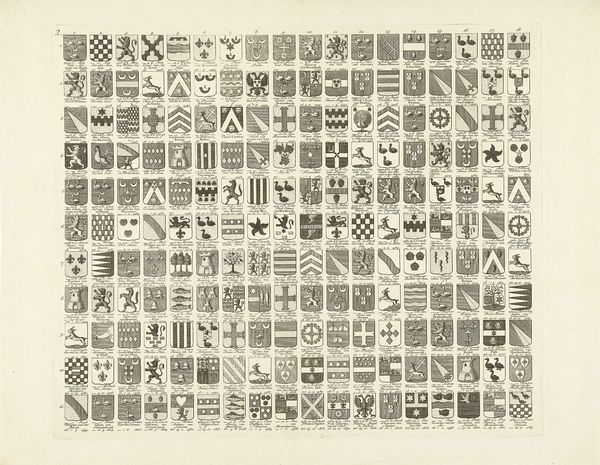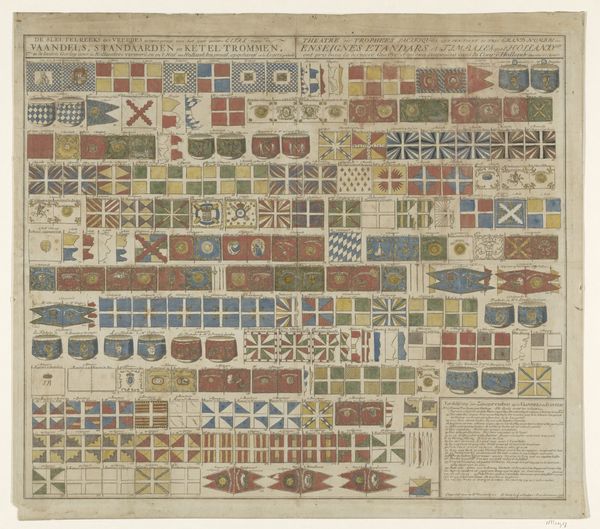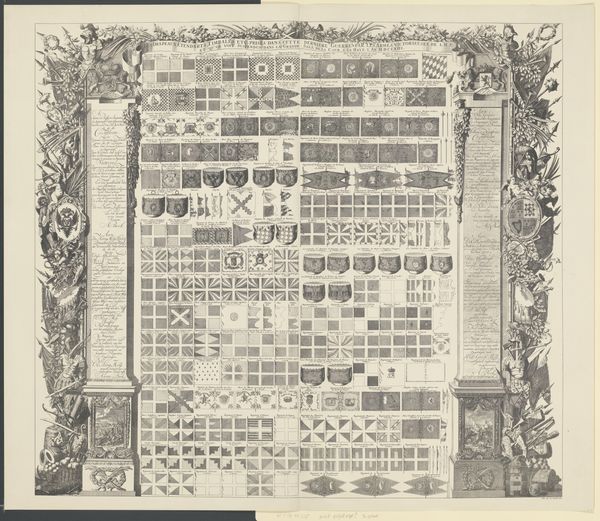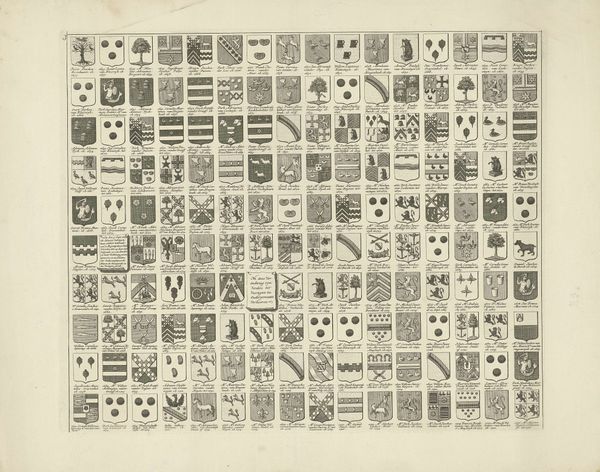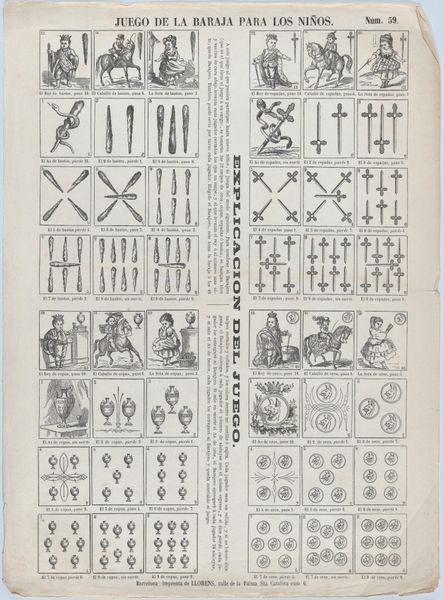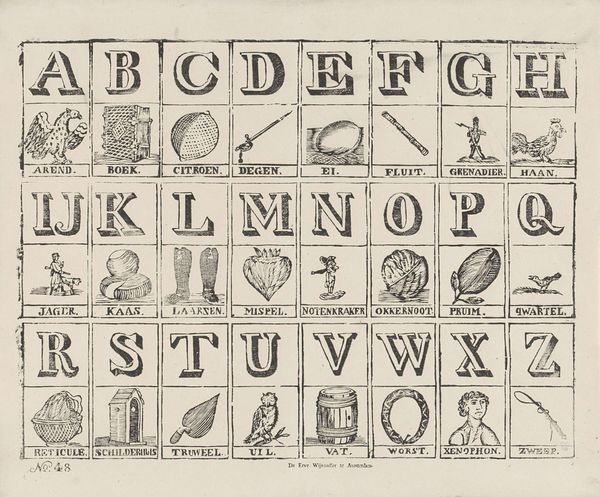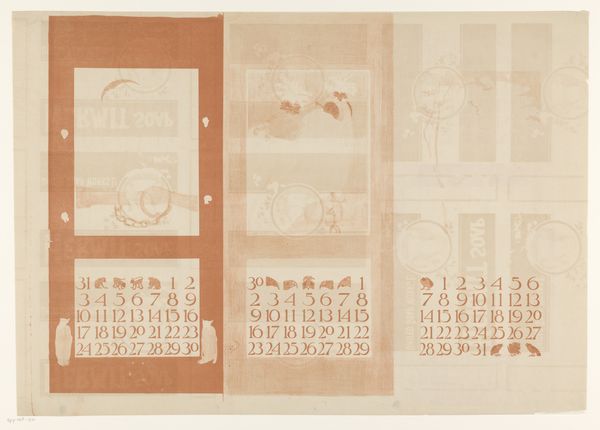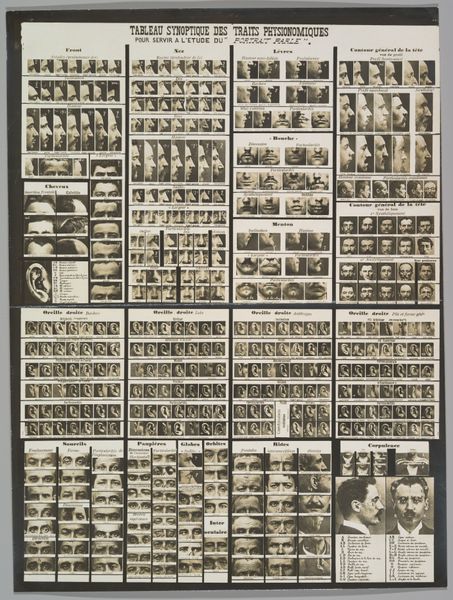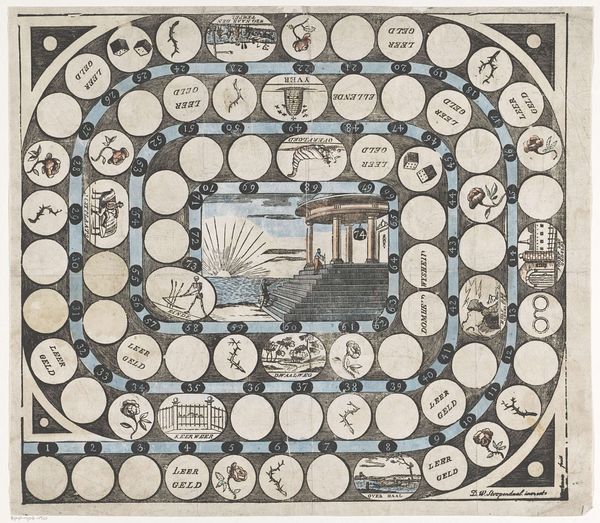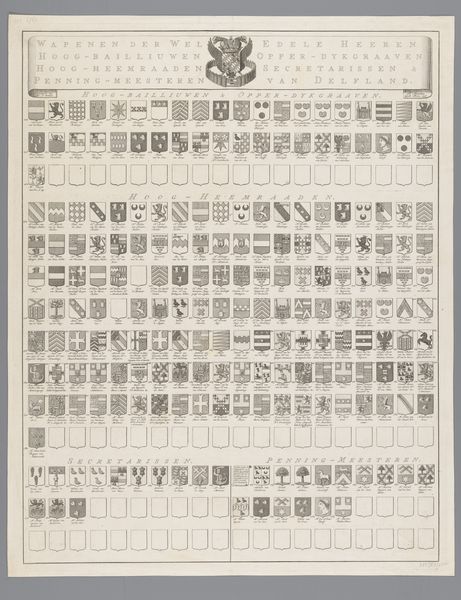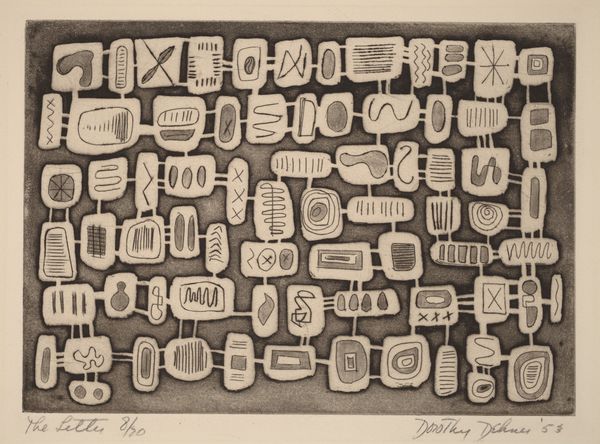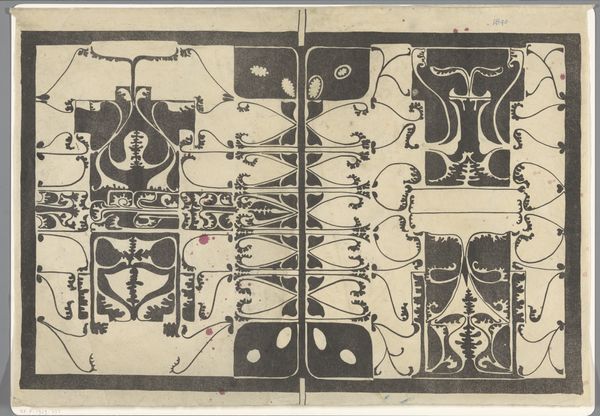
Vaandels, standaarden en pauken veroverd door de Nederlanders tijdens de oorlog, 1713 Possibly 1713 - 1717
0:00
0:00
anonymous
Rijksmuseum
print, engraving
#
baroque
# print
#
pattern design
#
geometric
#
history-painting
#
academic-art
#
engraving
Dimensions: height 503 mm, width 590 mm
Copyright: Rijks Museum: Open Domain
This etching from 1713 depicts flags, standards, and kettledrums captured by the Dutch during wartime. These aren’t mere trophies; they are potent symbols. Flags, across cultures, have been central in marking territory, identity, and power. Their designs, like emblems and colors, are carefully chosen to evoke allegiance, instill pride, and signal dominance. Note the array of crosses and geometric patterns - archetypal motifs deeply rooted in the human psyche. Consider the cross, a symbol predating Christianity, which recurs in different forms across these banners. Initially a symbol of balance and intersection, it gained new layers of meaning through its association with sacrifice and redemption. Now, look how these crosses have morphed and been charged with national or militaristic meaning to stir collective memory, a sense of shared history, triumph, and sacrifice. Flags can trigger deep-seated emotions, both positive and negative. They are not only emblems of nations, but also of the collective subconscious, embodying shared memories, and passed-down traumas. A flag’s evolution, like the cross, is a powerful example of the cyclical progression of symbols, constantly reshaped by the tides of history and human experience.
Comments
No comments
Be the first to comment and join the conversation on the ultimate creative platform.
